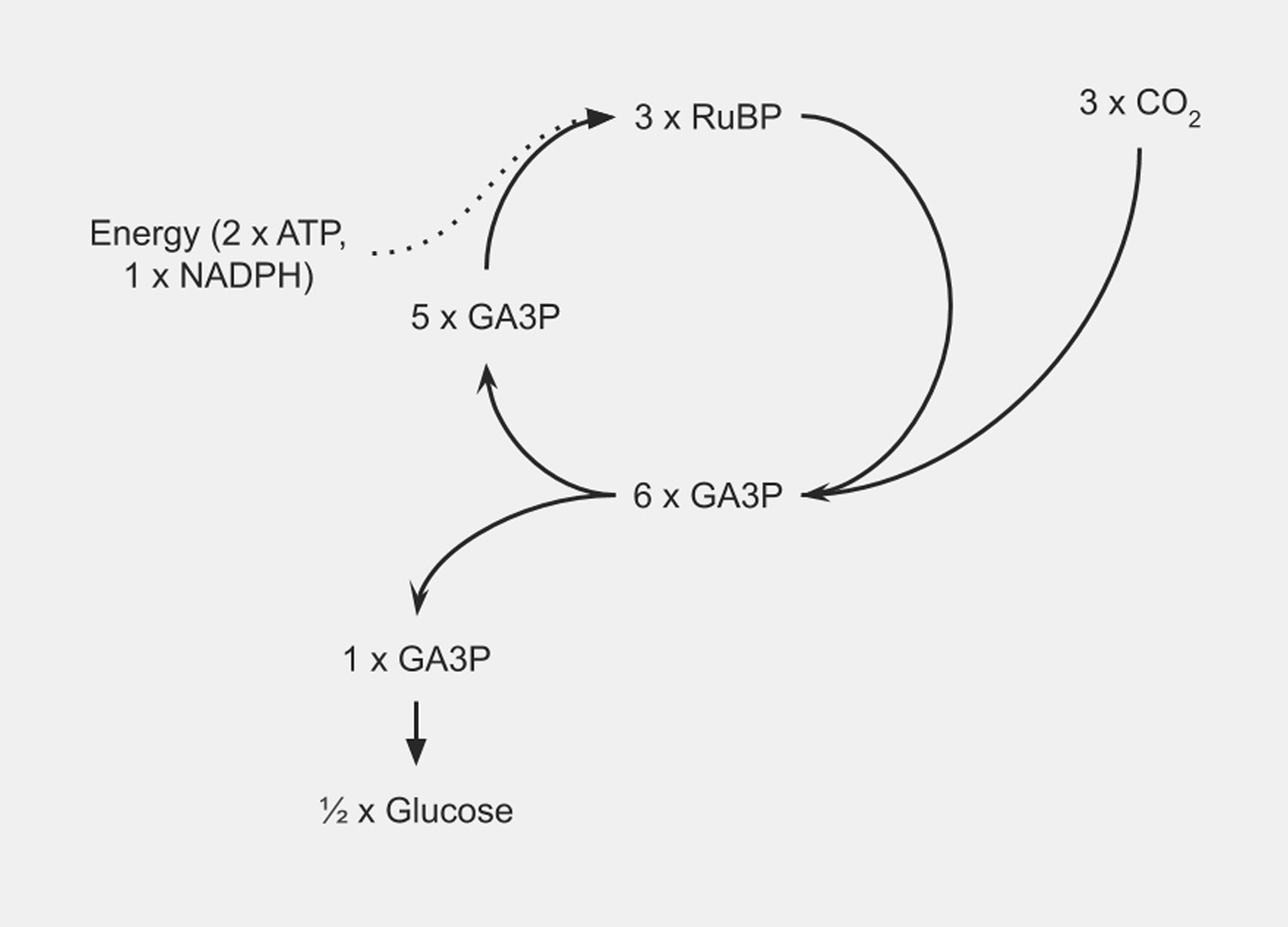The first step in photosynthesis is the light-dependent reaction. In this step, chlorophyll molecules absorb photons and use this energy to release an energised electron. The electron is passed to a chain of molecules and enzymes that use it to create two energy-carrying molecules, ATP and NADPH.
To replace the lost electrons, the chlorophyll splits water molecules, absorbing electrons and giving off oxygen gas and hydrogen ions: 2H2O → O2 + 4H+ + 4e–. ATP and NADPH then go on to take part in the light-independent (or ’dark’) reactions, of the Calvin cycle.
The Calvin Cycle
The Calvin cycle is a circular series of reactions that use the energy-carrying molecules (ATP and NADPH) created in the light-dependent reactions to ‘fix’ carbon dioxide into organic molecules.
In the Calvin cycle, one CO2 molecule reacts with ribulose bisphosphate (RuBP), a molecule with five carbon atoms, adding one carbon atom to create two molecules of glyceraldehyde 3-phosphate (GA3P), containing three carbon atoms each.
Five of every six molecules of GA3P produced in the cycle are used to regenerate RuBP. Five molecules of GA3P (with three carbon atoms each) create three molecules of RuBP (with five carbon atoms each). The sixth molecule of GA3P is used to create glucose. Two GA3P molecules create a single molecule of glucose containing six carbon atoms.
The energy-carrying molecules ATP and NADPH drive the series of reactions forward.
How Do Plants Make Use of Their Glucose Supply?
The glucose created during photosynthesis provides the energy for all the other cellular processes in the plant. Plants can transport glucose to where it is needed via a second type of vascular tissue called phloem. Xylem carries water and minerals up to the leaves to be used in photosynthesis, and phloem carries glucose back to other parts of the plant. The xylem and phloem together form the ‘veins’ in the leaves and stems of plants.
